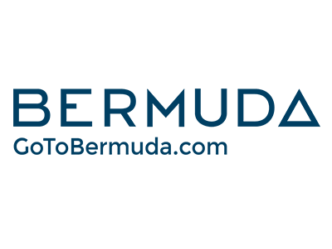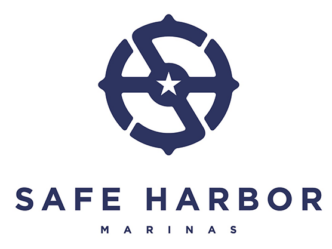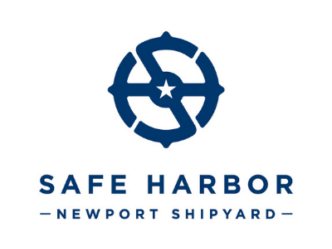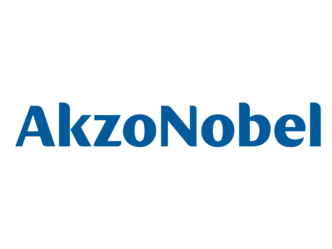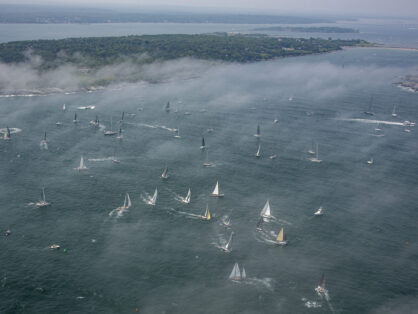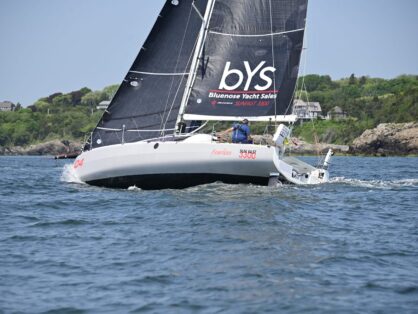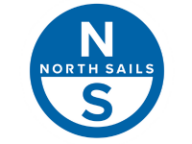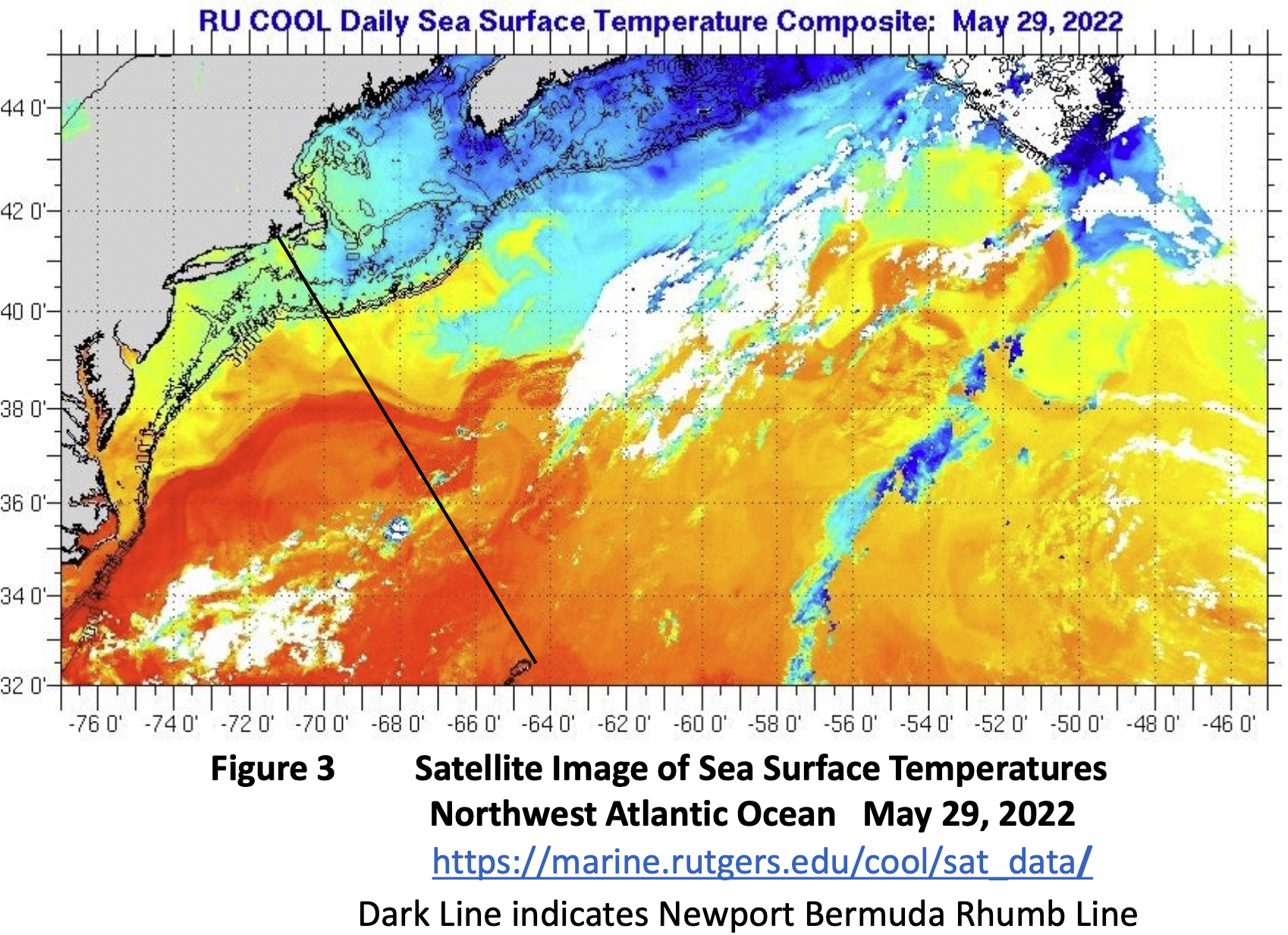
Navigator and oceanographer Frank Bohlen continues his pre-race analysis of the Gulf Stream structure and form, following up on his first report "2022 Gulf Stream Analysis, One Month to Go.")
By Frank Bohlen
It’s been an interesting month for those trying to understand rates of Gulf Stream evolution and how those changes might affect optimum routing. But before I get into that, I want to briefly discuss some characteristics of the currents expected along the route Newport to Bermuda. Let’s start with the inshore characteristics.
From the start of the Race to the edge of the continental shelf (a distance of approximately 100 nm) the primary currents encountered will be tidal in nature and periodic. In the vicinity of the start currents can be in excess of one knot flowing northerly on the flood and southerly on the ebb. For 17 June the ebb will be underway at the start with maximum currents approaching 1.25 knots. Speeds will tend to be higher in deeper water and weaker nearshore. Proceeding offshore, tidal currents will tend to progressively decrease in speed except in some areas near Point Judith or Block Island. Beyond Block Island tidal current speeds decrease substantially and are generally not a significant factor in routing. Of course extremely light winds may force consideration of even weak currents including both weak tidal flows and the general westerly drift (~ 0.1 kt) along the outer shelf driven by differences in water temperature and salinity.
Approaching the edge of the shelf it’s possible to encounter a warm core ring shed from the Gulf Stream. These clockwise rotating features, evident due to an abrupt change in water temperature, can be up to 100-300km in diameter with maximum currents approaching 3kts. Maxima are some distance in from the outer edge of the ring. They tend to drift slowly (~0.1 kt) to the west and have a relatively short life, on the order of months, due to impacting the bottom in the shallower water of the continental shelf.
Beyond the shelf, at a distance typically on the order of 200nm from Newport, lies the north wall of the main body of the Gulf Stream. Usually first observed as a rapid rise in water temperatures, the Stream displays flows that progressively increase with distance in to maxima approaching 5kts in the region of maximum temperature gradients, approximately 20-30 nm in from the north wall. It’s important to remember that the Gulf Stream flow, and in fact most ocean currents, is not a simple solid wall of moving water but rather consists of a series of discrete filaments. Filaments that may be miles across. Crossing these features will often result in substantial changes in current speed with 5kts only found in the core of an individual filament with 2-3kts more typically found between filaments. With this in mind, optimum routing to the finish is often achieved by taking advantage of (i.e. being satisfied with) a 2-3kt boost rather than searching for an often elusive 5kt max current.
To the south of the main body of the Gulf Stream it’s often possible to encounter a cold core ring. These counter-clockwise rotating features, similar in size to a warm core feature, can display maximum currents approaching 3kts and are often difficult to detect in satellite thermal imagery since being colder they tend to sink slightly allowing a thin warm water layer to form over them. As a result the satellite, sensing only the immediate surface temperatures, fails to detect the deeper colder water ring. They are best detected in satellite altimetry images. They too drift slowly to the west, if clear of direct Gulf Stream influence, and can persist for years in the deeper offshore waters.
Moving now to the Gulf Stream and associated features and their evolution over the past three weeks. Overall, the Gulf Stream in the vicinity of the Newport-Bermuda rhumb line has continued to display the prominent meander present in early May as well as several cold core ring features distributed to the east and west. On May 17 the meander crossed the rhumb line from the northwest to southeast at a point approximately 240nm from Newport. To the north of this point, satellite sea surface temperature (SST) imagery showed a band of warmer water distributed parallel to the north wall of the Gulf Stream (see illustration at top). The indicated temperature differences across this feature appear sufficient to produce some amount of current to the southeast when first encountered followed by northwest flows on leaving. Current speeds should be less than 1 kt resulting in little effect on boat course and speed over this short distance.
The altimetry for May 17 (see illustration below) shows a more complex meander pattern than the satellite SST image as a result of the “pinch off” in early May that formed the cold ring now situated near 36o N 69o 30’ W. Effects of the band of warm water north of the main body of the Stream are not apparent in the altimetry-based model. The altimetry model does show a diverse flow pattern with currents along the north wall of the Stream flowing essentially parallel to the rhumb line before crossing near 38o N. To the south into the interior of the Stream flow directions rotate progressively from southeast through the south and west before returning again to the east and northeast crossing the rhumb line near 37o N. A large cold core ring is situated near 37oN 66oW with a smaller cold feature just to the west of the rhumb line near 35o N. Both cold features are expected to drift to the west.

Within the last 10-12 days the May 17th pattern has remained essentially unchanged. The few satellite sea surface temperature images obtained continue to show significant areas of warm water to the north of the main body of the Stream (Fig.3). The main body appears to have moved slightly to the north with the north wall now crossing from the northwest to the southeast near 38oN. There is some indication of a steepening in the form of next limb of the meander to the east of the rhumb line but no sign that the mender itself is migrating to the east. Given its location any such movement could significantly affect optimum routing and warrants careful observation over the next couple of weeks.
To the south of the main body of the altimetry based model shows two counterclockwise rotating cold core rings situated to the east and west of the rhumb line (Fig.4). At the moment, the smaller feature centered near 35o 30’ N 67o 30’W is producing adverse currents (Newport to Bermuda) along the rhumb line north of 35o N for a distance of approximately 60nm. Conversely the larger ring centered near 37o N 66o W is producing favorable, southeasterly currents in the waters approximately 30nm to the east of the rhumb line. Both of these rings have shown some slight westerly migration over the past month. Continuation of this trend will likely affect routing considerations for the 17 June start of the Race.
Continuing south to Bermuda, the altimetry-based model (Fig.4) shows some slight amount of adverse current, generally less than 0.5kt, along the rhumb line near 35o N south of the cold core ring. Beyond this area a large clockwise rotating feature appears to be producing favorable south going currents over a distance in excess of 100nm. This feature also might drift to the west over the next two weeks. The remaining distance to Bermuda shows little in the way of significant current or features that might produce significant currents in the near term.
The behavior of the main body of the Gulf Stream, and in particular the development and progression of meanders observed over the past few months, appears to be entirely consistent with what has been occurring with increasing frequency over the past 10-15 years. That is, typically in late winter early spring a meander forms and rather than migrating progressively to the east (as they used to do regularly), deepens in place and becomes increasingly unstable. The meander essentially stays in place with changing form. In the limit this instability may lead to a “pinch off” forming warm or cold core rings. This process has produced a significant number of warm core rings which on migrating inshore have contributed to the unusual rate of warming of the waters of the Gulf of Maine.
The cause of this “unusual” behavior is not immediately apparent. Some have suggested that it is associated with a reduction in the amount of water coming from the Gulf of Mexico past the Florida Keys through the Straits of Florida. This reduction in turn might affect the strength of the flows moving past Cape Hatteras and offshore and the development of the associated meandering pattern. While of interest the small boat navigator need only know that the process will tend to reduce or eliminate the rate of migration of a meander and plan routing to accommodate this possibility. We will be paying particular attention to this as well as the behavior migration of the cold core features over the next couple of weeks.


